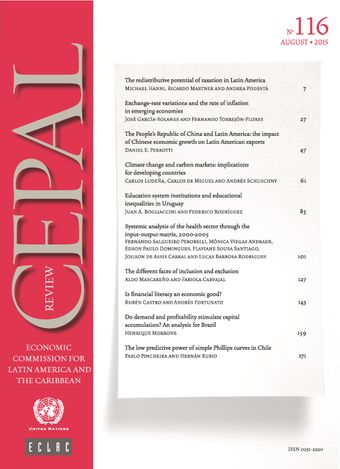-
Education system institutions and educational inequalities in Uruguay
- Source: CEPAL Review, Volume 2015, Issue 116, Aug 2015, p. 85 - 99
- Spanish
-
- 28 Mar 2016
Abstract
This article shows how certain aspects at the secondary level of Uruguays public school system produce inequalities in student achievement. The 2006 edition of the Programme for International Student Assessment (pisa) (oecd, 2006a) points to three key aspects of the institutions that regulate secondary education that play a part in reproducing inequalities of origin, hindering the equalizing role that guides the education system. First, the teacher assignment mechanism has the dual effect of sending a revolving door of young and inexperienced teachers to schools in unfavourable sociocultural contexts as well as concentrating teachers with more experience in schools in favourable contexts. Second, the geography-based system for assigning students to schools reproduces the residential segregation process. Lastly, the centralized system for supplying educational and technological materials is inadequate to the needs of the schools.
© United Nations





